26th August, 2025
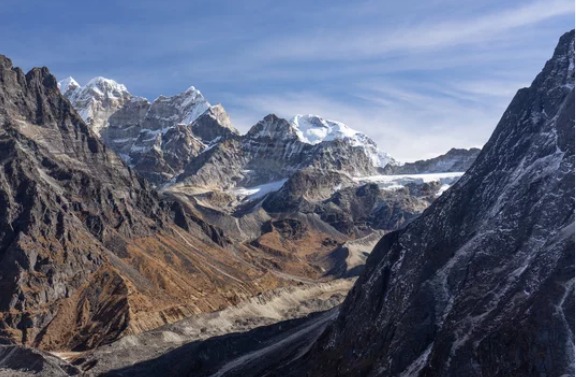
Feb 25, 2024
Mera Peak Climbing in March
- Major Highlights of Climbing Mera Peak in March
- Weather and Temperature at Mera Peak in March
- Why Climb Mera Peak in March?
- What is the Challenge of Climbing Mera Peak in March?
- Preparing for Mera Peak Climbing in March
- How difficult is it to climb Mera Peak?
- How long does it take to climb Mera Peak?
- Can I climb Mera Peak as I am a novice climber?
- Conclusion
- Mera Peak Climbing Packages
Climbing Mera Peak in March offers a thrilling adventure amidst the pristine Himalayan landscape. As Nepal transitions from winter to spring, March provides ideal climbing conditions with stable weather, clear skies, and moderate temperatures. Mera Peak, standing at 6,476 meters (21,247 feet), is Nepal's highest trekking peak renowned for its panoramic views of Everest, Lhotse, Makalu, and Cho Oyu.
During March, the route to Mera Peak is typically less crowded compared to peak climbing seasons, allowing for a more serene and immersive experience in the Himalayas. The trails leading to Mera Base Camp and High Camp traverse through rhododendron forests and remote Sherpa villages, offering cultural insights into the local way of life.
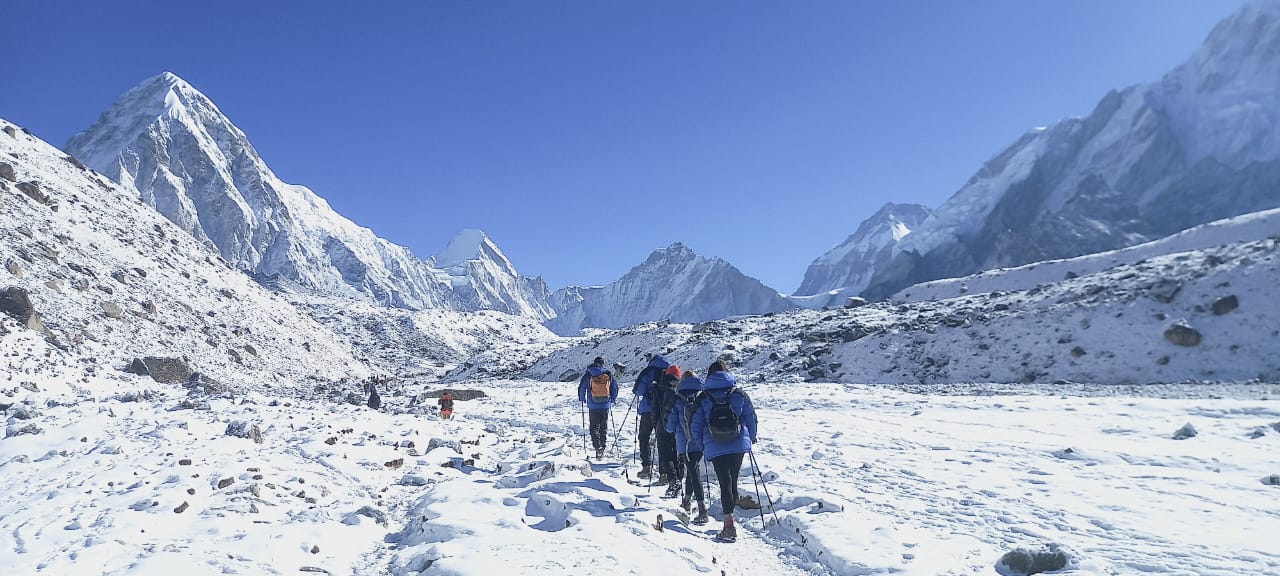
MERA AND ISLAND PEAK CLIMBING
Embark on a thrilling mountaineering adventure like no other with the Mera and Island Peak Climbing expedition crafted by We Sherpa Expedition and Trekking. This exclusive package is designed for adve...
Climbing Mera Peak in March requires physical fitness and acclimatization to high altitudes. Trekkers begin their journey from Lukla, flying in from Kathmandu, and gradually ascend through the Hinku Valley. The ascent to Mera Peak involves challenging but manageable glacier crossings and a final push to the summit, rewarded with breathtaking views of some of the world's highest mountains.
March provides stable weather conditions ideal for climbing, with clear visibility for enjoying panoramic vistas and capturing memorable moments. Nights can be cold at higher elevations, so adequate cold-weather gear is essential. Teahouses along the trekking route offer warm meals and cozy accommodations, ensuring comfort after long days of climbing.
Overall, March presents a perfect window for climbing Mera Peak, combining favorable weather, stunning scenery, and cultural immersion. Whether you're a seasoned climber or embarking on your first Himalayan expedition, Mera Peak in March promises an unforgettable adventure amidst the majestic peaks of the Khumbu region.
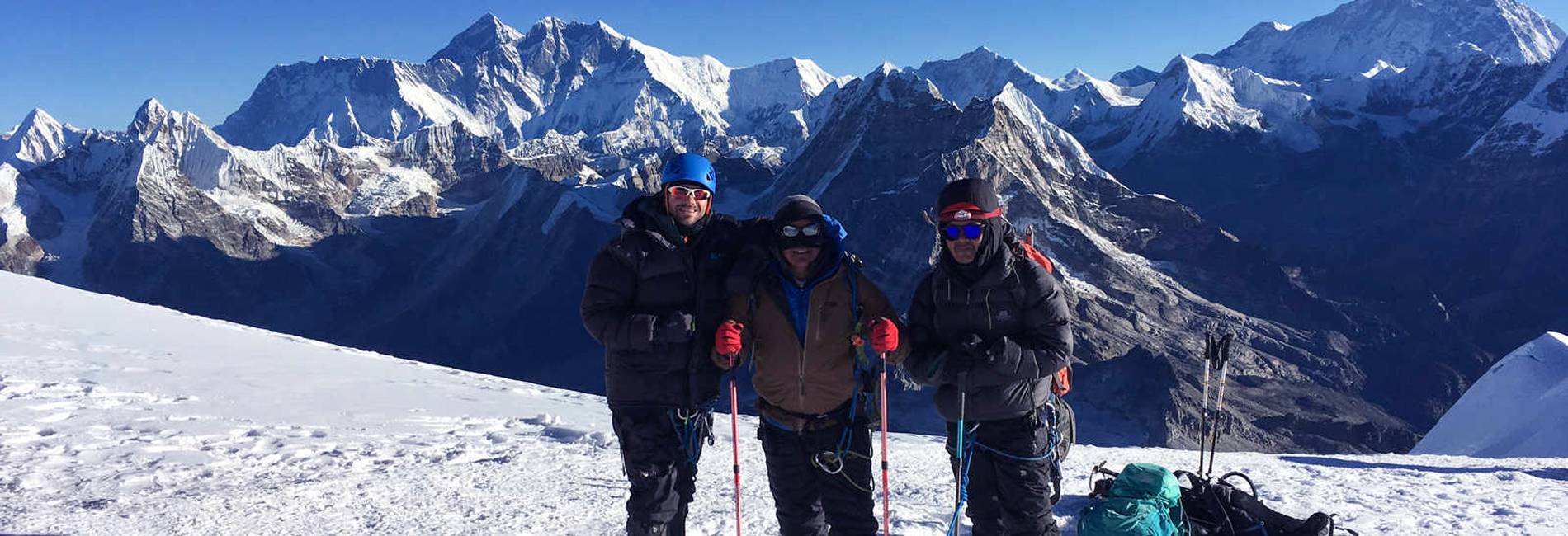
MERA PEAK CLIMBING
Mera Peak Climbing is an exhilarating adventure in Nepal that gives you an opportunity to reach the summit of Mera Peak at more than 6400m above sea level. Actually, it is the highest climbing (w...
Major Highlights of Climbing Mera Peak in March
Climbing Mera Peak in March presents adventurers with a host of thrilling highlights amidst the Himalayan splendor:
- Optimal Climbing Conditions: March offers stable weather conditions, clear skies, and moderate temperatures ideal for climbing Mera Peak. The days are typically sunny with good visibility, providing panoramic views of nearby peaks like Everest, Lhotse, and Makalu.
- Less Crowded Trails: Compared to peak climbing seasons, March sees fewer climbers on the trails to Mera Peak. This means trekkers can enjoy a quieter and more tranquil trekking experience, with less competition for accommodations and stunning vistas all to themselves.
- Scenic Route through Hinku Valley: The trek to Mera Peak takes adventurers through the picturesque Hinku Valley, adorned with blooming rhododendron forests and traditional Sherpa villages. March enhances this experience with the valley awakening from winter, offering vibrant colors and a glimpse into local Himalayan life.
- Cultural Immersion: Trekking in March allows for deeper cultural immersion as trekkers interact with Sherpa communities along the route. Experience warm Sherpa hospitality, savor local cuisine, and witness traditional practices amidst the backdrop of snow-capped peaks.
- Challenging Yet Rewarding Climb: Climbing Mera Peak involves technical but manageable glacier crossings and a final ascent to the summit. March conditions typically provide stable snow and ice conditions, making the climb challenging yet achievable for climbers with proper preparation and experience.
- Breathtaking Summit Views: Reaching the summit of Mera Peak in March rewards climbers with breathtaking 360-degree views of the Himalayan giants. From the top, enjoy unparalleled vistas of Everest, Cho Oyu, and the surrounding peaks bathed in the crisp, clear March sunlight.
- Cultural Festivities: Depending on timing, trekkers might also witness local festivals and cultural events in Sherpa villages during March, adding a unique dimension to the trekking experience.
Climbing Mera Peak in March is not just about conquering a Himalayan peak but also about immersing oneself in nature's grandeur and the rich cultural tapestry of the Everest region. It offers a perfect balance of adventure, solitude, and awe-inspiring beauty, making it a memorable expedition for climbers seeking a unique Himalayan experience.

MERA PEAK EXPEDITION 14 DAYS
The Mera Peak Expedition is a 14-day trek that offers a unique and challenging route to the summit of Mera Peak. The Upper Route is a less-traveled path that takes you through some of the most remote...
Weather and Temperature at Mera Peak in March
March is a favorable month for climbing Mera Peak, offering stable weather conditions conducive to mountaineering in the Himalayas. During this time, Nepal transitions from winter to spring, resulting in clear skies and moderate temperatures. Daytime temperatures at lower elevations along the trekking route typically range from 5°C to 15°C (41°F to 59°F), while temperatures at higher altitudes and during early mornings and evenings can drop below freezing.
The weather in March is characterized by sunny days with minimal precipitation, providing excellent visibility for enjoying panoramic views of nearby peaks like Everest, Lhotse, and Makalu. However, climbers should be prepared for cold nights and the potential for high-altitude winds, especially during the final ascent to the summit.
Why Climb Mera Peak in March?
March is an ideal month to climb Mera Peak for several compelling reasons. The weather conditions are relatively stable, with clear skies and moderate temperatures, offering excellent visibility and stunning views of the surrounding Himalayan peaks. Compared to peak climbing seasons like April and May, March sees fewer climbers on the trail, providing a more tranquil and less crowded trekking experience.
The transition from winter to spring adds a unique charm to the trek, with the Hinku Valley adorned in blooming rhododendrons and other alpine flowers. This period also allows climbers to witness Sherpa culture and traditions along the route, enhancing the overall cultural experience.
For those seeking a challenging yet rewarding Himalayan adventure, March offers optimal climbing conditions while avoiding the peak-season crowds. It's a perfect opportunity for climbers to test their skills, conquer a significant Himalayan peak, and immerse themselves in the natural beauty and cultural richness of the Everest region.
What is the Challenge of Climbing Mera Peak in March?
Climbing Mera Peak in March presents several challenges that climbers must be prepared to face. The primary challenge is the cold weather and potential for high-altitude winds, especially during the final ascent to the summit. Temperatures can drop significantly, requiring climbers to have proper cold-weather gear and insulation.
Another challenge is the technical nature of the climb, which involves navigating glacier crossings and steep ascents. March conditions typically provide stable snow and ice conditions, but climbers must be proficient in using crampons, ice axes, and ropes to negotiate these sections safely.
Altitude acclimatization is crucial due to Mera Peak's elevation of 6,476 meters (21,247 feet). Climbers should allow sufficient time for acclimatization stops along the trekking route to reduce the risk of altitude-related illnesses.
Lastly, logistical challenges such as remote trekking routes and limited facilities along the trail require careful planning and preparation. Climbers should be self-sufficient with food, water, and essential gear while trekking to Mera Peak in March.
Preparing for Mera Peak Climbing in March
Preparing for Mera Peak Climbing in March involves comprehensive physical conditioning, mental readiness, and logistical planning. Here are key preparations to consider:
Physical Conditioning: Focus on cardiovascular fitness, strength training, and endurance exercises to prepare for long hours of trekking and the physical demands of climbing at high altitudes.
Altitude Acclimatization: Plan a gradual ascent to allow the body to adjust to reduced oxygen levels. Include acclimatization days in your itinerary to minimize the risk of altitude sickness.
Cold-Weather Gear: Pack adequate clothing and gear for sub-zero temperatures, including insulated jackets, thermal layers, gloves, hats, and sturdy waterproof boots suitable for glacier crossings.
Technical Skills: Familiarize yourself with basic mountaineering techniques such as using crampons, ice axes, and ropes. Consider joining a guided expedition led by experienced mountaineers if you're new to technical climbing.

MERA PEAK EXPEDITION 13 DAYS
Mera Peak is one of the most popular and highest trekking peaks in Nepal, standing at 6,476 meters. The Mera Peak expedition is a 13-day trek that takes you through some of the most breathtaking scene...
Permits and Logistics: Obtain necessary permits from the Nepalese authorities and arrange logistics such as accommodation, meals, and transportation to Lukla, the starting point for the trek to Mera Peak.
Emergency Preparedness: Carry a first aid kit, emergency shelter, communication devices, and sufficient supplies of food and water. Familiarize yourself with evacuation procedures in case of emergencies.
Climbing Mera Peak in March offers a unique and exhilarating adventure amidst the majestic Himalayas. Here are some essential tips to enhance your climbing experience:
1. Weather Monitoring: Stay updated on weather forecasts and conditions throughout your climb. Be prepared for sudden changes in weather, especially at higher altitudes.
2. Pace Yourself: Maintain a steady pace and take regular breaks to conserve energy and prevent altitude sickness. Listen to your body and adjust your pace accordingly.
3. Hydration and Nutrition: Stay hydrated by drinking plenty of water and fluids. Consume high-energy foods rich in carbohydrates and proteins to fuel your climb and aid in muscle recovery.
4. Respect Local Culture: Embrace Sherpa culture and traditions along the route. Show respect for local customs, religious sites, and wildlife habitats.
5. Leave No Trace: Practice Leave No Trace principles by packing out all trash, including biodegradable waste. Minimize your environmental impact on the fragile Himalayan ecosystem.
6. Safety First: Prioritize safety at all times. Follow instructions from your guide, use proper mountaineering equipment, and adhere to established safety protocols.
7. Enjoy the Journey: Take time to appreciate the breathtaking scenery and the sense of achievement as you reach the summit of Mera Peak. Celebrate your accomplishment and cherish the memories of your Himalayan adventure.
Following these tips will help ensure a safe, successful, and memorable climb to Mera Peak, allowing you to fully experience the beauty and challenge of this iconic Himalayan peak.
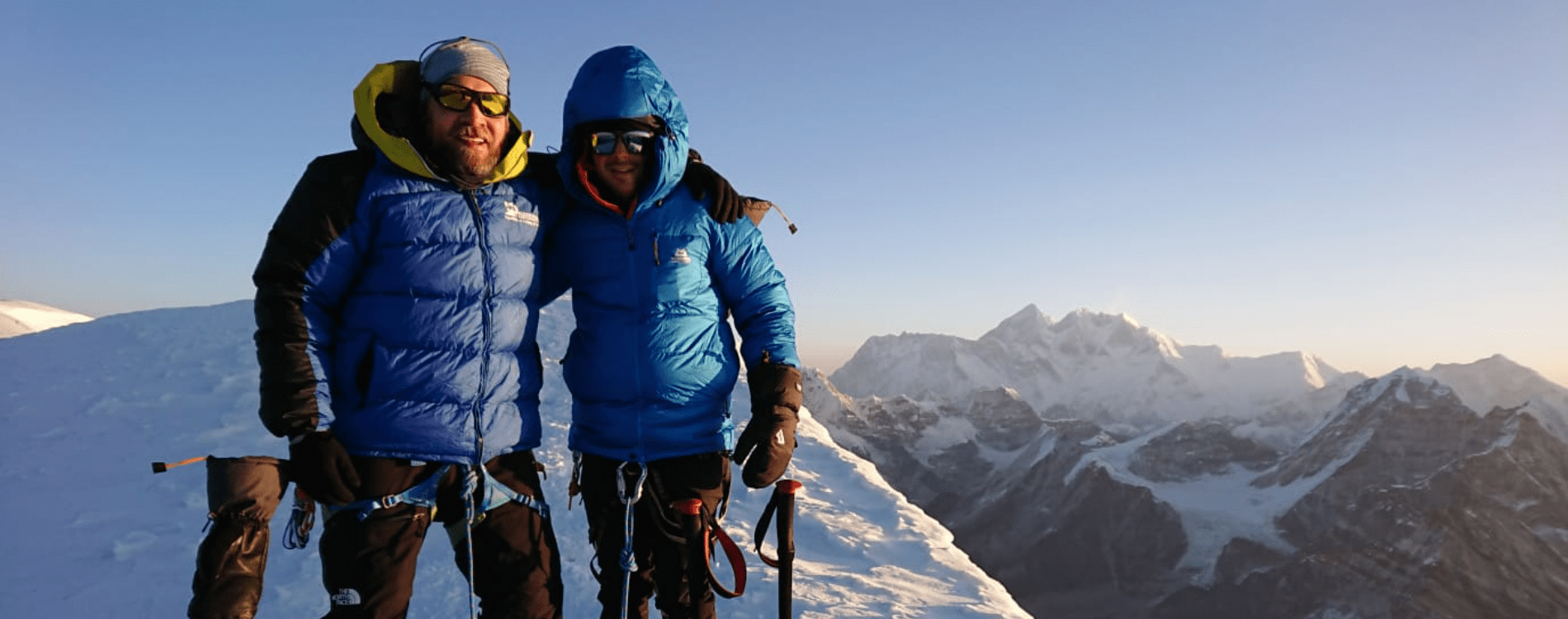
MERA PEAK SUMMIT RETURN BY HELICOPTER
Mera Peak Climbing Just in 12 Days Return By Helicopter to Lukla and flight back Kathmandu.This is an excellent opportunity to climb Nepal’s highest peak without having to obtain a permit (6,476m/21,1...
How difficult is it to climb Mera Peak?
Climbing Mera Peak is considered moderately challenging in the realm of Himalayan mountaineering. At 6,476 meters (21,247 feet), it is Nepal's highest trekking peak, requiring physical fitness, technical skill, and altitude acclimatization. The ascent involves crossing glaciers, navigating crevasses, and summiting a steep snow slope, which can be physically demanding.
While Mera Peak does not demand extensive mountaineering experience, climbers should have prior trekking experience and be comfortable with basic mountaineering techniques such as using crampons and ice axes. The main challenges include coping with high-altitude conditions, unpredictable weather, and the technical aspects of glacier travel.
Guided expeditions led by experienced mountaineers provide valuable support, route guidance, and safety measures, making it more accessible for climbers with limited experience in high-altitude mountaineering.
How long does it take to climb Mera Peak?
The duration to climb Mera Peak typically ranges from 14 to 18 days, depending on the chosen itinerary, weather conditions, and acclimatization schedule. The trek begins with a flight from Kathmandu to Lukla, followed by a multi-day trek through the scenic Hinku Valley to reach Mera Peak Base Camp.
The climbing portion typically takes around 5 to 7 days, including acclimatization hikes and the ascent to the summit. Climbers ascend gradually, establishing camps at strategic points such as Mera High Camp before attempting the final summit push.
After reaching the summit, climbers descend back to Base Camp and then trek back through the Hinku Valley to Lukla. The trekking days are spaced to allow for acclimatization, essential for adapting to high altitudes and reducing the risk of altitude sickness.

MERA PEAK SUMMIT 10 DAYS
This is a chance to go climbing without the necessary permits that most climbing expeditions require in Nepal. Mera Peak fits the bill perfectly and at (6,476m/21,190ft) you will have spectacular view...
Can I climb Mera Peak as I am a novice climber?
While Mera Peak is considered suitable for novice climbers with basic mountaineering skills and fitness, it is essential to undertake thorough preparation and training before attempting the ascent. Novice climbers should ideally have prior trekking experience at high altitudes and be comfortable with walking long distances over varied terrain.
Joining a guided expedition led by experienced mountaineers significantly enhances the safety and success of novice climbers on Mera Peak. Guides provide essential instruction on using mountaineering equipment, navigating glaciers, and managing high-altitude challenges.
A guided climb also includes logistical support such as accommodation, meals, and transportation, allowing climbers to focus on the climb itself rather than organizational details. However, climbers should be prepared for the physical demands and potential altitude-related issues that come with climbing a peak over 6,000 meters in height.
With proper training, acclimatization, and guidance from experienced professionals, novice climbers can successfully summit Mera Peak and experience the exhilaration of standing atop one of Nepal's highest trekking peaks.

ISLAND PEAK CLIMBING
Sherpa Expedition & Trekking (Est.1977) are pleased to announce FOR ADVENTURERS the most awesome, exhilarating & unforgettable climbing and treks on offer anywhere today!...
Conclusion
In conclusion, climbing Mera Peak presents a rewarding challenge amidst the stunning landscapes of the Himalayas. While it requires physical fitness, basic mountaineering skills, and preparation for high-altitude conditions, Mera Peak remains accessible to climbers with varying levels of experience. Choosing the right time, such as March for stable weather and fewer crowds, enhances the overall experience. Whether you're a seasoned mountaineer or a novice adventurer seeking a Himalayan summit, Mera Peak offers a memorable journey filled with breathtaking views, cultural immersion, and personal achievement. Embrace the adventure, prepare diligently, and embark on an unforgettable expedition to conquer the heights of Mera Peak.
Mera Peak Climbing Packages
Mera Peak Summit Return By Helicopter
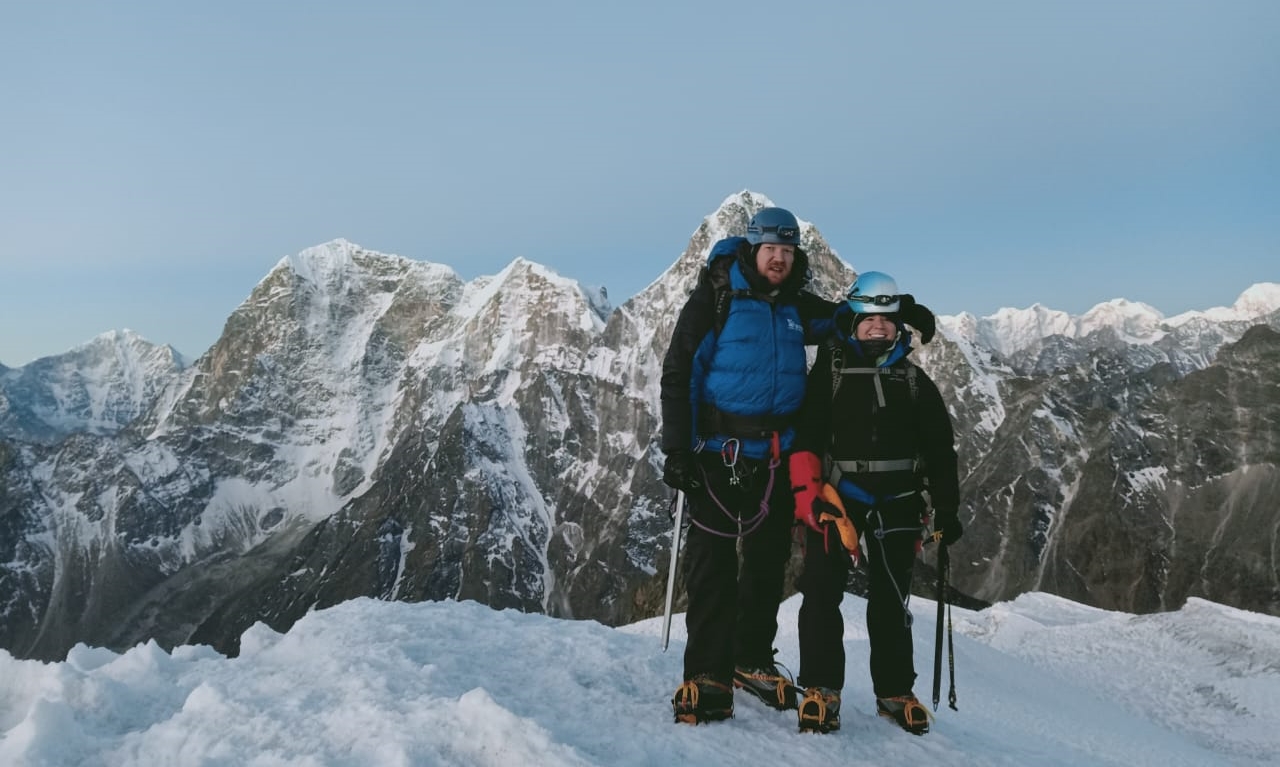
LOBUCHE PEAK CLIMBING
Lobuche East (6,119m/20,075ft), set in Nepal's stunning Khumbu on the Nepalese side of Everest.The best time to go trekking in Nepal is in Autumn (September-November) and in...
Any Questions? Let Us Know.
Recent Posts
17th June, 2025


















